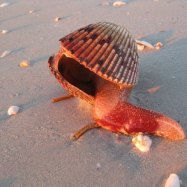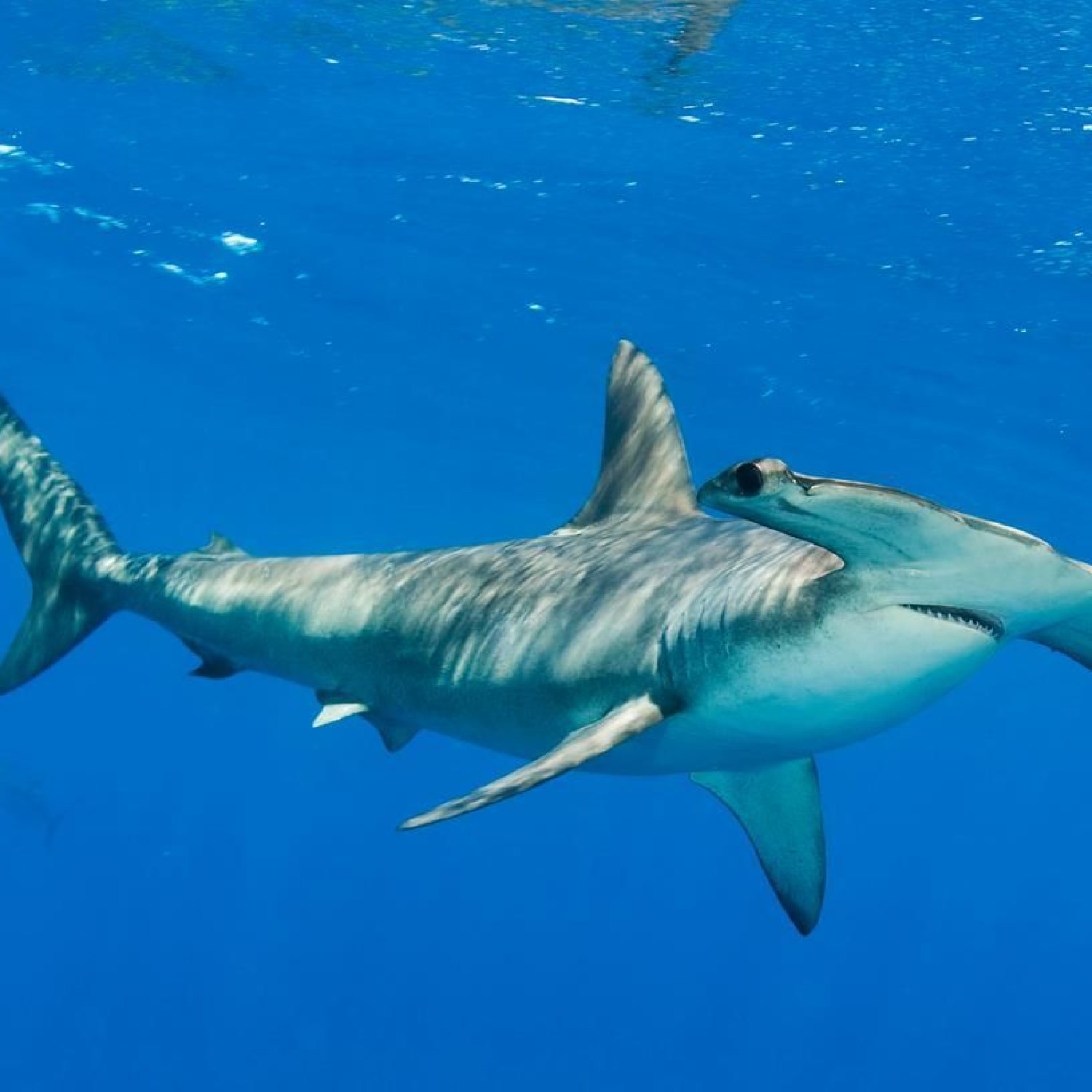
Smooth Hammerhead Shark
Up to 14 feet
The Smooth Hammerhead Shark, found in oceans and coastal regions, can reach up to 14 feet in length. Belonging to the Sphyrnidae family, this shark has a distinctive body shape - cylindrical and laterally compressed. Keep an eye out for this magnificent creature on your next beach trip! #SmoothHammerheadShark #OceanLife
Animal Details Summary:
Common Name: Smooth Hammerhead Shark
Kingdom: Animalia
Habitat: Open ocean, coastal waters
The Fascinating Smooth Hammerhead Shark: A Master of the Open Ocean
Imagine yourself swimming in the vast, blue ocean when suddenly, a large, sleek shape catches your eye. As it gracefully glides through the water, you realize that you are in the presence of a Smooth Hammerhead Shark (Sphyrna zygaena). With its distinctive hammer-shaped head and striking coloration, this majestic creature is a sight to behold.The Smooth Hammerhead Shark is a species that belongs to the animal kingdom under the phylum Chordata Smooth Hammerhead Shark. They are classified under the class Chondrichthyes, which includes cartilaginous fishes such as sharks, rays, and chimaeras. These magnificent creatures belong to the order Carcharhiniformes and the family Sphyrnidae, which is named after the unique shape of their heads.
Found in open oceans and coastal waters, the Smooth Hammerhead Shark has a global distribution, spanning tropical and temperate oceans. They are typically found in countries with coastlines such as the United States, Australia, Japan, Brazil, and South Africa. These stunning predators are masters of the open ocean, and we are about to dive deep into the world of this fascinating species.
Habitat and Behavior
Smooth Hammerhead Sharks are open water species, known to roam the deep ocean and coastal regions. They have a range of habitats, from the surface to depths of up to 2600 feet. They are highly migratory animals, often following warm ocean currents in search of food or breeding grounds.These sharks have a solitary nature, and they are not commonly found in large groups, except during breeding season Scotch Collie. However, they are known to form schools when searching for prey or during migration. With their powerful swimmerets, they are capable of long-distance swimming, making them efficient hunters in the open ocean.
Diet and Feeding
As carnivorous predators, Smooth Hammerhead Sharks have a varied diet, consisting mainly of fish such as herring, mackerel, and sardines. They are also known to feed on squid, octopus, crabs, and even other sharks. These sharks have advanced senses, including excellent vision and electroreception, that aid them in their hunting.One of the most remarkable feeding behaviors of the Smooth Hammerhead Shark is their ability to trap their prey. With their unique hammer-shaped head, they have a wider field of vision, making it easier for them to detect food. They use this head shape to pin down their prey against the seafloor or in the corners of reefs, making their catch easier.
Physical Features
The distinguishing feature of the Smooth Hammerhead Shark is, of course, their hammer-shaped head, or cephalofoil. This head shape is called a cephalofoil because it resembles a mallet, with its flattened and extended sides. However, unlike other hammerhead species, the cephalofoil of the Smooth Hammerhead Shark is more rounded and not as pronounced.Apart from its unique head shape, this shark has a classic shark appearance, with a cylindrical and laterally compressed body. They have five gills, two dorsal fins, and a caudal fin, which gives them excellent agility and maneuverability in the water. The coloration of the Smooth Hammerhead Shark is also distinct, with grayish-brown on the dorsal side and lighter coloring on the ventral side.
Size and Length
Smooth Hammerhead Sharks are among the larger species of hammerhead sharks, with an average length of around 10-14 feet. However, there are records of them growing up to 20 feet in length. Their cephalofoil can make up to about one-third of their total length, and they have an impressive wingspan, making them one of the most visually striking sharks.These fascinating creatures are generally not aggressive towards humans, although they have been known to attack when provoked or when they mistake humans for prey. With their size and powerful jaws, it is essential to exercise caution and respect when encountering them in the wild.
Conservation Status
The International Union for Conservation of Nature (IUCN) has listed the Smooth Hammerhead Shark as vulnerable. Like most shark species, this magnificent creature faces threats such as overfishing and accidental entanglement in fishing gear. They are also at risk of habitat degradation due to pollution, climate change, and the effects of open-ocean trawling.However, conservation efforts are underway to protect these sharks, including the implementation of fishing quotas and regulations, creating marine protected areas, and raising awareness about their vital role in the ocean ecosystem. These efforts are crucial in ensuring the survival of this species and maintaining a balanced ocean environment.
Conclusion
In conclusion, the Smooth Hammerhead Shark is a fascinating and awe-inspiring predator of the open ocean. From their unique head shape to their remarkable hunting abilities, they are truly a marvel of nature. However, with the threats they face, it is imperative that we take action to protect and conserve these beautiful creatures for future generations to appreciate and admire.As we continue to explore and understand more about this species, we must also learn to coexist with them in their natural habitat. Let us strive to preserve the oceans and all the magnificent creatures that call it home, for a healthy ocean is vital to our planet's well-being. So the next time you're in the open ocean, keep an eye out for the Smooth Hammerhead Shark and be in awe of its majestic presence.

Smooth Hammerhead Shark
Animal Details Smooth Hammerhead Shark - Scientific Name: Sphyrna zygaena
- Category: Animals S
- Scientific Name: Sphyrna zygaena
- Common Name: Smooth Hammerhead Shark
- Kingdom: Animalia
- Phylum: Chordata
- Class: Chondrichthyes
- Order: Carcharhiniformes
- Family: Sphyrnidae
- Habitat: Open ocean, coastal waters
- Feeding Method: Carnivorous
- Geographical Distribution: Tropical and temperate oceans worldwide
- Country of Origin: Global
- Location: Oceanic and coastal regions
- Animal Coloration: Grayish-brown on the dorsal side and lighter on the ventral side
- Body Shape: Cylindrical and laterally compressed
- Length: Up to 14 feet
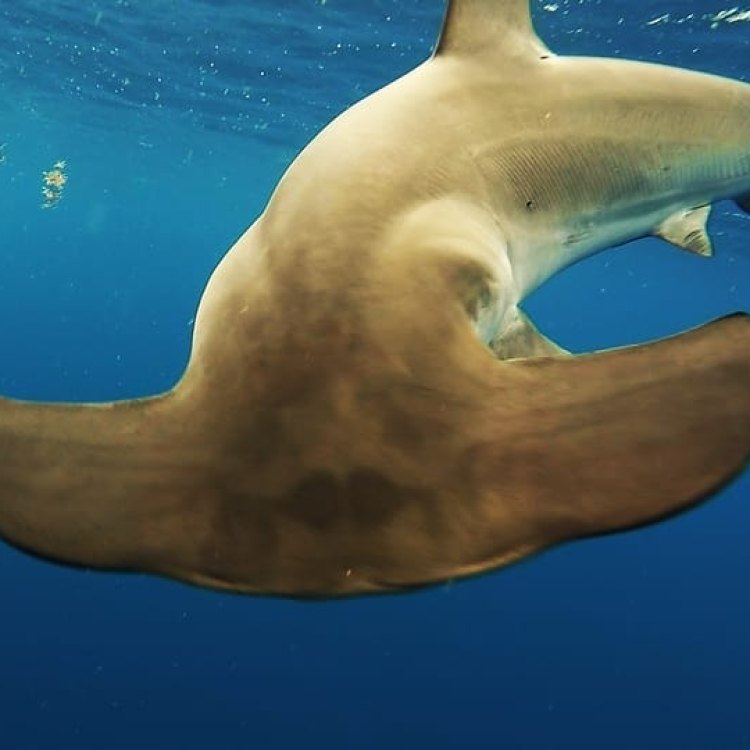
Smooth Hammerhead Shark
- Adult Size: 7-13 feet
- Average Lifespan: 20-40 years
- Reproduction: Viviparous
- Reproductive Behavior: Give birth to live young
- Sound or Call: Unknown
- Migration Pattern: Seasonal migration
- Social Groups: Solitary or small groups
- Behavior: Aggressive and territorial
- Threats: Overfishing, bycatch, habitat degradation
- Conservation Status: Endangered
- Impact on Ecosystem: Maintains balance in marine ecosystems by controlling prey populations
- Human Use: Fished for its meat, fins, and liver oil
- Distinctive Features: Wide hammer-shaped head, tall dorsal fin
- Interesting Facts: They have a unique sensory organ called the ampullae of Lorenzini that helps them detect electrical signals in the water.
- Predator: Larger sharks and humans
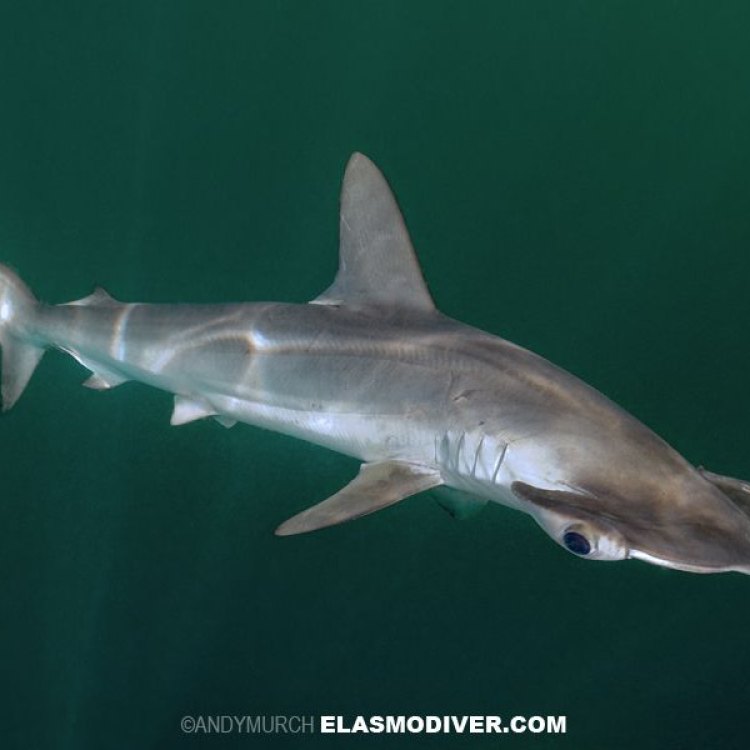
Sphyrna zygaena
The Smooth Hammerhead Shark: A Majesty of the Sea
Underneath the vast blue ocean lies a world full of mysteries and wonders. Each creature that resides in this ecosystem holds unique and interesting qualities that never cease to fascinate us. One such creature is the Smooth Hammerhead Shark. With an imposing size, an average lifespan of 20-40 years, and a distinct hammer-shaped head, this shark species definitely stands out among the rest PeaceOfAnimals.Com. In this article, we will explore the various features and behaviors of this majestic creature and understand its role in maintaining balance in our marine ecosystem.Adult Size and Reproduction Pattern
One of the striking features of the Smooth Hammerhead Shark is its impressive size. As adults, they can grow up to 7-13 feet, making them one of the largest shark species. Interestingly, there is a significant difference in size between male and female Smooth Hammerheads, with females being larger than males.
Reproduction is a crucial aspect of any species' life cycle, and the Smooth Hammerhead is no exception. Like most shark species, they are viviparous, meaning they give birth to live young. Pregnant female hammerheads will typically migrate to warmer, coastal waters to give birth. This phenomenon, known as parturition, is essential for their offspring's survival, as they need the warmth of the shallow waters to grow and develop.
Reproductive Behavior and Sound or Call
During the breeding season, male Smooth Hammerheads engage in a unique behavior called "synchronized swimming Spongy Moth." This act helps them attract female sharks and show their dominance. However, the specific details of this behavior are still unknown, and researchers continue to study it.
Interestingly, little is known about the sound or call of Smooth Hammerheads. Unlike other shark species, they have not been observed making any vocal noises. This may be due to their solitary or small group behavior, as we will discover in the next section.
Behavior and Social Groups
Smooth Hammerheads are known to be aggressive and territorial creatures. They are often found swimming alone, only forming small groups when there is plenty of food available. During the breeding season, male sharks may also form groups to find potential mates.
Their territorial behavior is mainly due to their need to find and protect food sources. As apex predators, they play a crucial role in maintaining balance in the marine ecosystem by controlling the population of their prey. Thus, they are essential in keeping our oceans healthy and thriving.
Threats and Conservation Status
Unfortunately, despite their vital role in the ecosystem, Smooth Hammerhead Sharks are considered endangered species. They face various threats, including overfishing, bycatch, and habitat degradation. Commercial fishing is the most significant threat to their population, as they are targeted for their meat, fins, and liver oil.
Their long lifespan and slow reproductive rate also make them particularly vulnerable to overfishing. It takes about 8-10 years for a Smooth Hammerhead to reach sexual maturity, and females do not give birth until they are at least 10 years old. This slow reproductive cycle cannot keep up with the high demand for their meat and other body parts.
Impact on the Ecosystem
As mentioned earlier, Smooth Hammerheads play a crucial role in maintaining the balance of marine ecosystems. By controlling the population of their prey, they prevent a ripple effect on the food chain. Without them, certain prey populations may grow out of control, leading to a decrease in other species and a disruption in the ecosystem's overall health.
Human Use and Distinctive Features
Despite their endangered status, Smooth Hammerheads are still fished for various purposes. Their meat is considered a delicacy in some countries, and their fins are used for shark fin soup. The liver oil is used in the production of vitamins and cosmetics.
Apart from their significant size, Smooth Hammerheads have other distinctive features that set them apart from other shark species. Of course, their most prominent feature is their wide hammer-shaped head, which gives them their name. This unique head shape provides enhanced vision and helps them detect prey in their surroundings.
Another distinctive feature of the Smooth Hammerhead is their tall dorsal fin, giving them a regal appearance as they glide through the ocean waters. This tall fin is also an adaptation that helps them swim efficiently and navigate the deep ocean.
Interesting Facts and Predators
Finally, let's explore some interesting facts about the Smooth Hammerhead Shark. One of the most fascinating things about this species is their unique sensory organ called the ampullae of Lorenzini. This organ helps them detect weak electrical signals in the water, allowing them to find and catch prey more efficiently. This remarkable ability makes them skilled hunters and formidable predators.
However, that does not mean that Smooth Hammerheads are free from predators themselves. Larger shark species, such as Great Whites and Tiger Sharks, can pose a threat to them, along with humans. But as apex predators, Smooth Hammerheads have strong and powerful bodies, making it challenging for other predators to take them down.
In conclusion, the Smooth Hammerhead Shark is an awe-inspiring creature with a commanding presence in the ocean. As an endangered species, their preservation and conservation are vital for the survival of our marine ecosystem. It's essential to raise awareness about the threats they face and take necessary steps to protect and preserve their population. Let us strive to coexist with these magnificent creatures and appreciate them as one of the many wonders of the ocean.
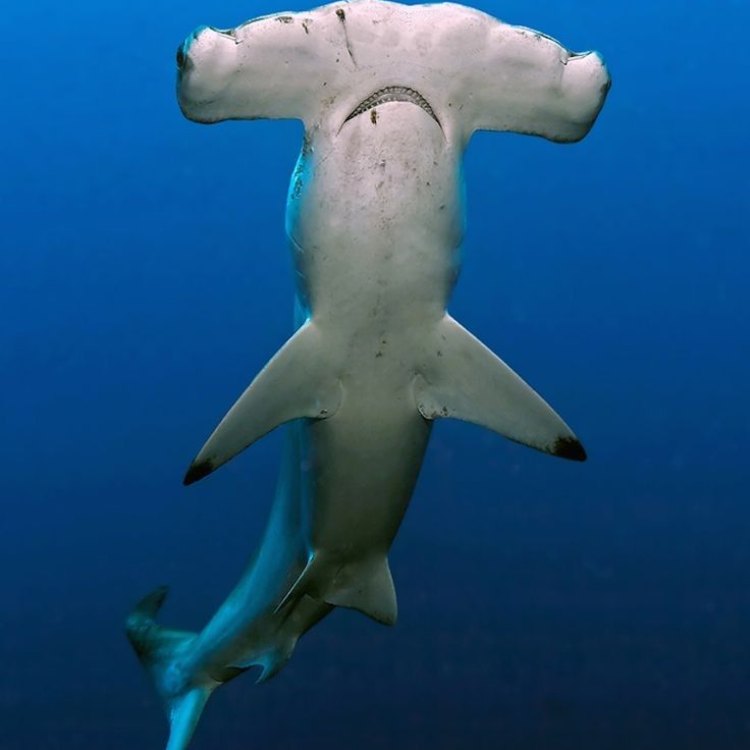
The Fascinating Smooth Hammerhead Shark: A Master of the Open Ocean
Disclaimer: The content provided is for informational purposes only. We cannot guarantee the accuracy of the information on this page 100%. All information provided here may change without prior notice.











